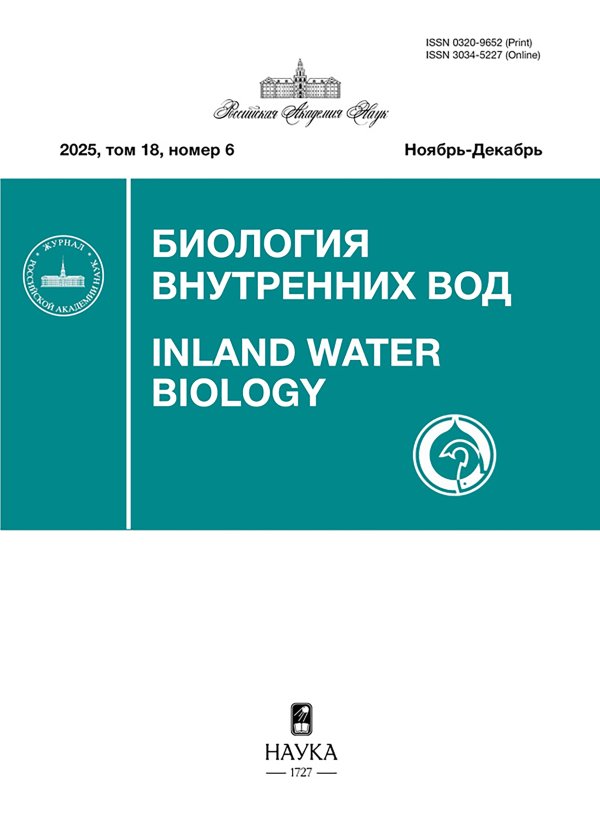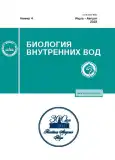Content of Sodium, Potassium, Calcium, Magnesium in Organism of Larva of Sibling Species Сhironomus balatonicus and Сhironomus plumosus in Dependence on Salinity1
- Authors: Martemyanov V.I.1, Markiyanova M.F.2
-
Affiliations:
- Papanin Institute for Biology of Inland Waters, Russian Academy of Sciences
- Shirshov Institute of Oceanology, Russian Academy of Sciences
- Issue: No 4 (2023)
- Pages: 547-548
- Section: ЭКОЛОГИЧЕСКАЯ ФИЗИОЛОГИЯ И БИОХИМИЯ ГИДРОБИОНТОВ
- URL: https://journals.rcsi.science/0320-9652/article/view/134922
- DOI: https://doi.org/10.31857/S0320965223040150
- EDN: https://elibrary.ru/SASWTP
- ID: 134922
Cite item
Full Text
Abstract
The tolerant salinity ranges are 0.008–6 and 0.09–9.3 g/L, respectively, for Ch. plumosus L., 1758 and Ch. balatonicus Devai, Wülker et Scholl, 1983. In the tolerant range of salinity, the level of sodium, potassium, calcium, magnesium in the body of Ch. balatonicus was regulated within 33.9–77.1, 7.7–13.7, 11.9–37.6, 54.7–110.6 mmol/kg wet weight, respectively. The concentration of sodium, potassium, calcium, magnesium in the body of Ch. plumosus was maintained within of 62.7–80.8, 10.6–18, 6.7–12, 2.9–6 mmol/kg wet weight in stage III larvae and 49.6–62.3, 9.7–14.8, 42.5–62.2, 47.9–83.4 mmol/kg wet weight in individuals of IV age. In the optimal salinity range of 0.8–5.3 g/L, the sodium concentration in the body of Ch. balato-nicus was maintained at a constant level, decreased in the critically low zone of 0.8–0.09 g/L, and increased in the critically high zone of 5.3–9.3 g/L. In the critically low and high salinity zone, the organism’s ability to survive is reduced. The content of sodium in the body of freshwater aquatic organisms serves as a reliable criterion for assessing the optimal, critically low and high salinity zones.
About the authors
V. I. Martemyanov
Papanin Institute for Biology of Inland Waters, Russian Academy of Sciences
Author for correspondence.
Email: martem@ibiw.ru
Russia, Nekouzskii raion, Yaroslavl oblast, Borok
M. F. Markiyanova
Shirshov Institute of Oceanology, Russian Academy of Sciences
Email: martem@ibiw.ru
Russia, Moscow
References
Supplementary files










